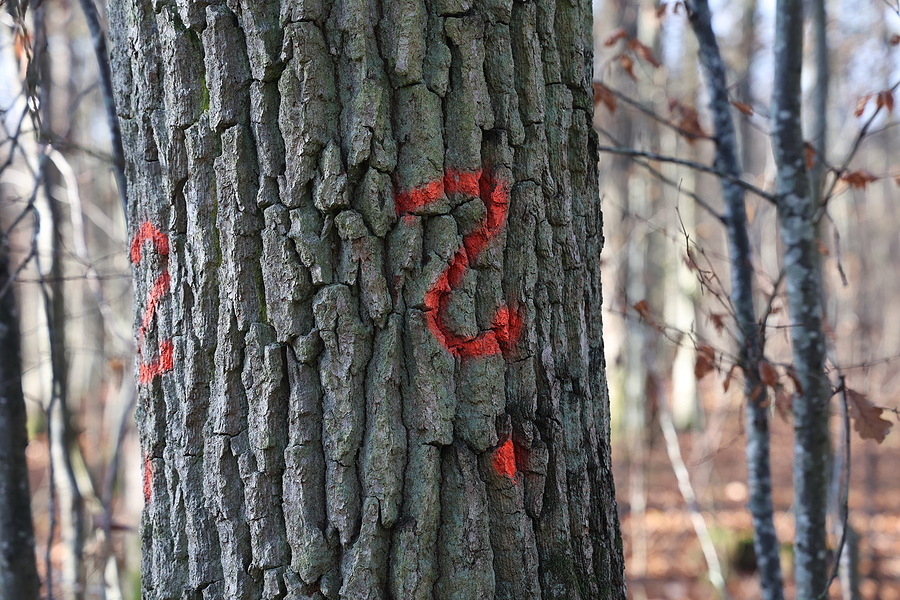Many homeowners wonder how to spot or recognize a dead tree or a tree that is dying in their yard. It is important to ask these questions because a dead or diseased tree can pose a dangerous threat to its’ immediate surroundings. A dead tree will eventually fall and deteriorate, causing structural damage or harm to whatever it hits. Cars, houses, electrical wiring, and even people are potential victims of a perishing tree. It is good for homeowners to wonder about tree care and how to distinguish healthy trees from sick ones.
Continue reading to learn how to tell the difference between diseased, dead, and living trees for the safety of your property and family.

The Distinctions Between Dead Trees and Sick Trees
Dead Trees
A dead tree will not sprout any new buds on its limbs and branches. Every spring, tiny green buds will appear on healthy trees, which signifies new branch or limb growth. If you notice through the seasons that a certain tree is not re-blooming, there could be a problem with the tree’s health.
Dead trees will also have dry and brittle bark. As a test, break off a small branch to see if it bends or snaps right off. If the branch snaps off in a dry and quick manner, then the tree is most likely dead. If the branch is flexible and bends, it is a sign of life. Also, look at the inside of the broken branch; if it looks green and moist then the tree is perfectly fine.
Another easily spotted sign of a dead tree is the trunk bark. Underneath the bark of the tree, there should be a moist, green, and meaty material. This means the tree is healthy and living. Use your fingernail or a small knife and scrape off a small section of the bark and look for these signs. If the bark is dry, dark brown, and flaky, it could mean the tree is dead.
Tree Diseases
A tree doesn’t have to be dead to be a potential danger to its surroundings. Diseased or dying trees are also dangerous to have near properties and high traffic areas. The signs to a diseased and sick tree are very similar to the signs of a dead tree; however, trees expire from the inside out, so a tree that appears fairly healthy may actually be dying.
Several variables can make a tree sick. For example, insects and other pests can cause substantial damage to a tree. One common infestation comes from the Emerald Ash Borer. Over fertilization, mold, storm damage, and more are all other possibilities for a tree to fall ill.
All trees, either dead or diseased, should be removed by a trained and professional tree service technician. They retain the proper equipment and industry knowledge to safely remove or treat dead and diseased trees without posing any further harm to the property. Give a local tree care company a call for advice and information about dead trees in your town.
Are you concerned about the condition of your landscaping trees? Contact Complete Tree Care at 317-783-2518 for licensed Indianapolis Indiana tree service and affordable price. We serve both residential and commercial clients all throughout central Indiana.
Related Posts:
Should I Remove a Dead Sycamore Tree?
4 Tree Diseases You Should Watch Out For
Can I Trim Dead Branches Off a Tree in Summer?
